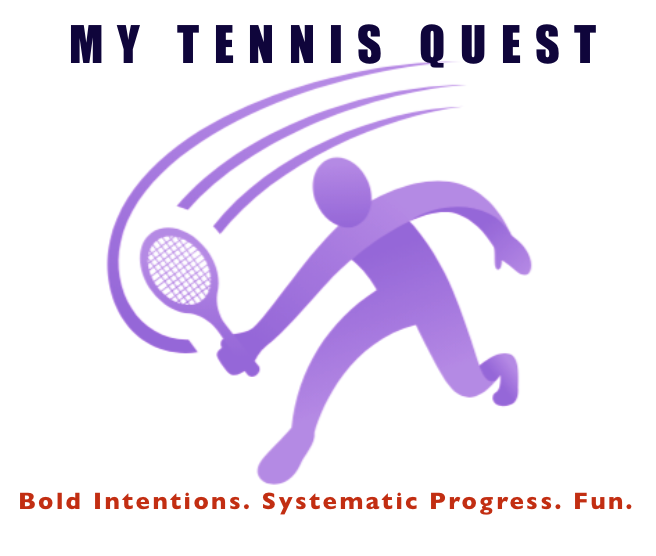In a tennis match you will spend more time between points than you will actually spend playing tennis. So, the way you use this between-point time is key to your mental state during the match.
Between each point, you have 20 seconds. (The pros have a 25 second clock.) That might not seem like a ton of time, but it is more than enough to accomplish everything you need to regulate your state of mind, do a tactical assessment, and get yourself prepared for what is coming next.
Establishing a routine that you can repeat continually throughout a match is crucial. And it requires practice. Be sure to work on this mental approach in practice matches. When you form good habits in practice, you will repeat them in matches.
Assuming you have created a routine that includes the “right” steps, you will learn to achieve a state of mind that will produce your best tennis. If your mind is focused on a positive routine that means it is not focused on negative thoughts, or wandering away from your match, or stuck on other thoughts and emotions that are not going to lead you to success in the moment. You want to create a consistent thought pattern that will lead you to positive results, point after point.
Here is a suggestion of a routine you can use. As you practice this routine you will be able to accomplish each step in a few seconds.
Suggested Between-Points Sequence
- At the moment a point ends, switch racket to your non-playing hand, relax your dominant arm, and take a grounding breath. That means you want to breathe in fully through your nose, filling your lungs and chest, and then as you exhale, feel your body settle downward and your feet connect solidly with the ground. Walk with purpose as you go to pick up the ball or grab your towel.
- You want to welcome any feelings you are having. Notice and name what is happening in your body. For example: “I feel tightness in my quadriceps.”, “My arm is shaking”, or, “My foot feels hot”. And if you don’t notice anything specific, that is ok, too.
- Analyze the previous point and strategize for the upcoming point. A tennis match is a process of adjustment. Each point you want to assess what worked and what didn’t, and continually fine tune. You want to take a moment to consider the shot combination you will use in the upcoming point or any specific tactics you will employ.
- Set your state of mind. The key phrases you use are personal and can change, depending on where your mind and emotions are in any given moment. With experience you will recognize what state of mind you need to establish for the next point. Perhaps you need to energize yourself and ratchet up your intensity. Or find a place of calm. Maybe you need to remind yourself to have fun. The key is to talk to yourself in a positive and encouraging manner. Here is an example of what you can say: “I am relaxed. I am confident, I am really enjoying this challenge of playing a close tiebreaker.” Perhaps you can smile or tap your racket on the ground to establish your focus.
- Now you are ready to serve or return of serve, Visualize the path of your initial stroke and reinforce your opening shot combination. Take another grounding breath as you feel your connection to the ground and feel relaxed energy flowing through your body. Let go and trust yourself to play the next point with conviction and authority.
These steps are merely a suggestion. You can fine-tune or reorder the steps if that works better for you. At first, these steps might seem like a lot, but you will find, with practice, that you can flow through this process very efficiently. And with a good process in place, you will be playing your best tennis when it counts the most!
